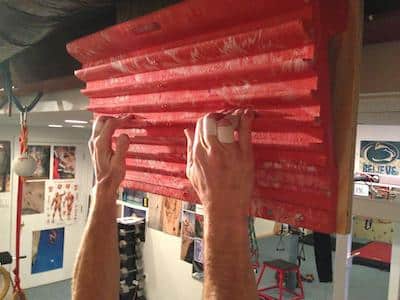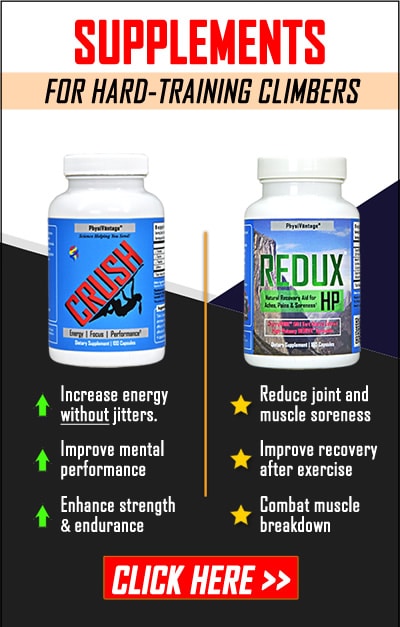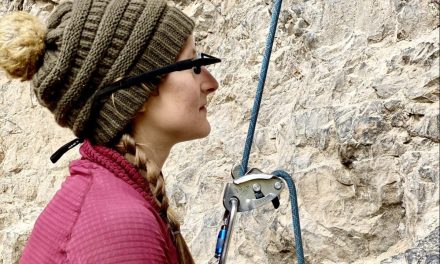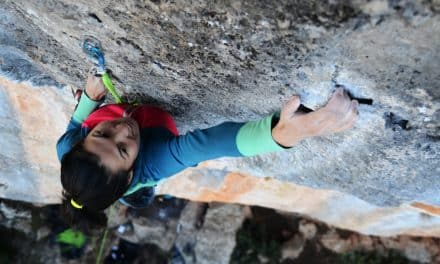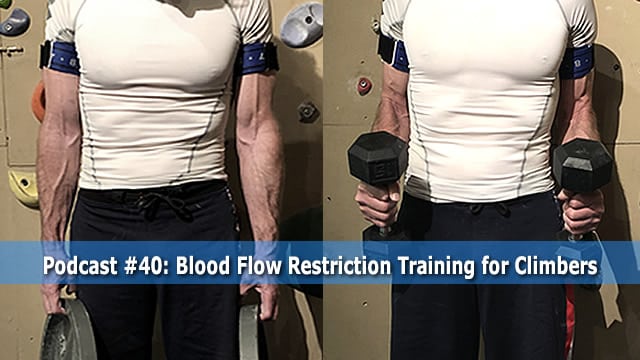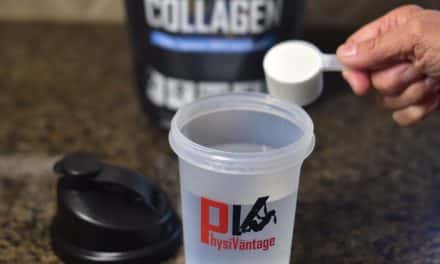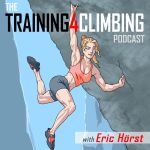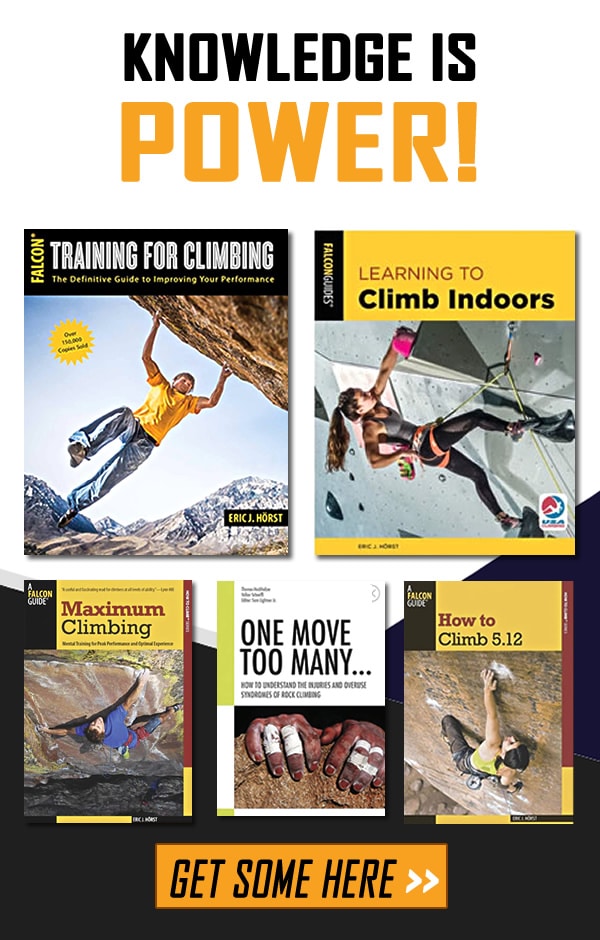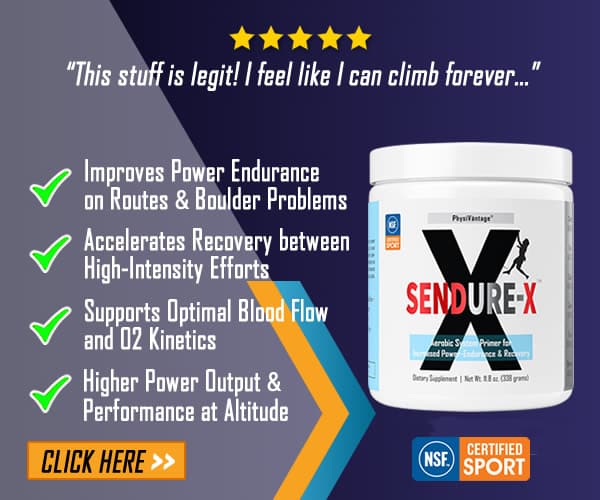Most climbers know that forearm and finger strength is one of the most important factors involved in reaching your potential on the wall. But what’s the most applicable and efficient way to build that kind of strength? Learn about maximum strength training in the fingers, forearms, and pulling muscles for climbers all along the ability spectrum.
This article was originally published in October of 2015).
In climbing, your level of maximum strength in the forearm flexor and pulling muscles is a common physical limitation. Gripping small holds, making a powerful pull, and locking off with one arm all command your muscles to contract briefly with near maximal force.
Furthermore, your ability to rest effectively on a barely adequate, medium-sized hold and express strength endurance on a pumpy sequence is also a function of your maximum strength. Therefore, developing greater absolute grip and pull strength is the single most important aspect of an effective training program.
Beginner Climbers
So what’s the best way to train this all-important attribute? For beginner climbers, simply climbing three days per week will yield plenty of sport-specific strength gains. At this level, no highly targeted training is necessary, nor appropriate, as it could very well lead to injury. Of course, training technique and movement skills is paramount at this stage. Any time spent strength training should be focused on the antagonist, stabilizer, and the larger pulling muscles rather than the fingers.
Intermediate to Advanced Climbers
Intermediate and advance climbers, with at least a couple of years of climbing experience, will indeed benefit from targeted strength training, and they have likely developed enough tendon strength to begin a gradually progressive twice-per-week, climbing-specific strength training.
Elite Climbers
Elite climbers are in a class on their own: With years of climbing experience and (presumably healthy) Kevlar-like tendons, these individuals can embark on a high-intensity, two- or three-day-per-week strength and power training regimen. Breaking through the next performance plateau depends on it.
“Training for greater absolute grip and pulling strength is the single most important aspect of an effective training-for-climbing program.”
Behind the Scenes of Maximum Strength Gains
Attaining a higher level of maximum strength is a matter of increasing neural recruitment, muscle hypertrophy, and building greater cellular stores of ATP-CP. The training goal is to maximize fiber recruitment and liberate ATP-CP at the highest possible rate for five to twelve seconds. Consequently, a properly executed maximum strength exercise will utilize a sufficiently high resistance to produce near-failure in around ten seconds. It’s important to recognize that any strenuous exercise performed for more than ten to fifteen seconds will train local endurance, rather than strength, as these longer efforts are fueled more by anaerobic glycolysis.
How to Train Maximum Strength for Climbing
The protocol for effective strength training is to do brief exercises (3 to 5 reps or 90% of 1RM). Near-complete recovery (>=3 minutes) is essential between sets to allow for all-out efforts each time. As for the number of sets to do, I suggest intermediate, advanced, and elite climbers do three, four, and five sets, respectively. Here are a few examples of climbing-specific strength exercises:
- Hypergravity pull-ups with enough added weight to make five repetitions difficult.
- Bodyweight fingerboard hangs on holds small enough to be difficult if held for ten seconds. (Be sure to train different grips.)
- Hypergravity fingerboard hangs on medium-sized holds with enough weight to make a ten-second hang very difficult.
- One-arm lock-offs held for five seconds.
- One-arm pull-ups (or one-arm-assisted) for one to five repetitions.
Near-limit bouldering can aid in the development of maximum strength, especially in sub-elite climbers. Except for beginning climbers, however, more highly targeted supplemental exercises are essential to provide optimal stimuli for maximum strength gains. Consider that failure on boulders often occurs because of movement flaws, inadequate flexibility, or lack of power, and therefore bouldering does not necessary elicit grip or pull-muscle failure in less than twelve seconds. Shrewd, precise training—in accordance to the principles of exercise science—is paramount for eking out additional strength gains over the long term. Train smarter to climb harder!
Related Articles:
- 4 Fingerboard Training Protocols That Work
- Finger Warmups for Better Climbing (With Reduced Injury Risk)
- 5 Reasons Why Stronger Fingers Equals Better Climbing!
- Everything You Need to Know About Finger Tendons and Injury (Well, Almost)
- Intro to Hangboard Training for Finger Strength and Endurance
Copyright © 2000–2023 Eric J. Hörst | All Rights Reserved.

